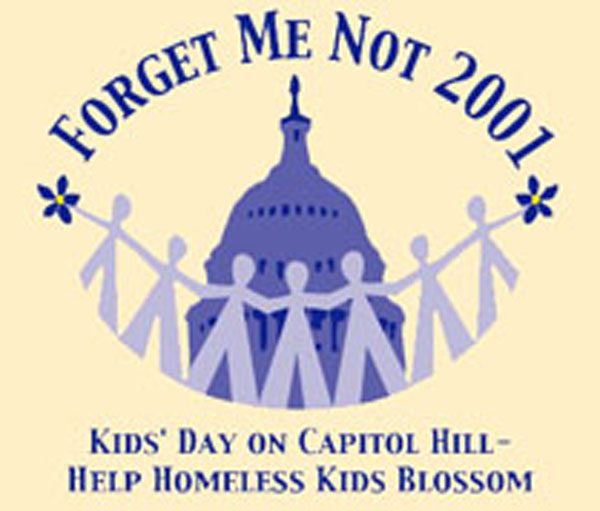Who Is Charlie?
In some ways, Charlie is every homeless kid.
In reality, Charlie was a little boy hanging around the parking lot Hesed House, an ecumenical center for ministry to very poor and homeless persons in Aurora, IL. Charles, with his mom, had nowhere to live except their beater car. It was summer 1993.
Pat Van Doren, a photojournalist with a heart and a good eye, was also hanging around the parking lot. When this 4-year-old boy appeared, carrying a stray cat like a sack of potatoes, his shoes on the wrong feet, and an innocent smile, Van Doren knew what she saw. Click and head for the darkroom!
The shelter’s abbreviated summer schedule, with occasional meals and access to showers and laundry, relied on a limited volunteer base. Charlie and his mom, along with dozens of adults and a handful of kids, were among millions of homeless persons in every community across the U.S., reliant on the kindness of others for sustenance.
When the developing fluids revealed this captivating image of Charlie, Van Doren’s creative senses kicked into overdrive. She shared the image with Diane Nilan, director of the shelter, who shared it with Charles’ mother, getting her permission to use the photo.
Soon thereafter, a family staying at the transitional shelter at Hesed House, encountered barriers trying to register at their old school. One thing led to another, and a scrappy band of activists, including Nilan and Van Doren, decided to push for the first state bill to remove barriers commonly experienced by homeless students.
|
Pat Van Doren |
Charlie's Bill Advocacy Effort Begins
Van Doren’s eye and ideas focused on Charlie. She suggested using him as the poster child for the campaign to get legislation passed. “Charlie’s Bill” became the catch phrase for the Illinois Education for Homeless Children’s Act. Charlie’s picture adorned each handout distributed to Illinois lawmakers.
The underdog effort to get the bill passed became “entertainment” in an otherwise log-jammed legislative session. Ardent efforts by the Charlie’s Bill team, far from slick lobbyists, and dedicated, bipartisan sponsors, accomplished the near-impossible: in May 1994, Governor Jim Edgar signed into law this hallmark legislation.
The new law opened school doors for children and teens who had no permanent place to live. The IL State Board of Education developed strategies to make sure school districts across the state complied, a gradual process. Homeless families and youth reacted gratefully as they learned that school stability was guaranteed by law.
From State Law to Federal
Fast forward to 1998. Newly elected Congresswoman Judy Biggert (IL, R-13), visited Hesed House at the behest of one of the sponsors of Charlie’s Bill. After an eye-opening tour of this former incinerator building converted to a life-giving facility, Diane asked Mrs. Biggert, supportive of the law when she was a state representative, to take this law to the federal level. The McKinney-Vento Education for Homeless Children and Youth Act was up for reauthorization and it needed strengthening. Mrs. Biggert agreed.
 This national “flower-roots” campaign had the slogan “Forget Me Not: Help Homeless Kids Blossom.” Nilan teamed up with Barbara Duffield, staff at the National Coalition for the Homeless, to organize activities to call attention to the issue of homeless kids’ educational rights. Zealous activists from across the nation pushed and prodded their lawmakers. Busloads of kids without homes made their way to these lobby efforts from across the nation, including from Hesed House. Hearings with homeless kids testifying were held at the Capitol.
This national “flower-roots” campaign had the slogan “Forget Me Not: Help Homeless Kids Blossom.” Nilan teamed up with Barbara Duffield, staff at the National Coalition for the Homeless, to organize activities to call attention to the issue of homeless kids’ educational rights. Zealous activists from across the nation pushed and prodded their lawmakers. Busloads of kids without homes made their way to these lobby efforts from across the nation, including from Hesed House. Hearings with homeless kids testifying were held at the Capitol.
Untold effort went into this unlikely campaign. Incredible media coverage focused on this other segment of the homeless population—children and youth, mostly invisible, and their quest for education. In December 2001, President George W. Bush signed into law No Child Left Behind (NCLB), including a newly-improved Education for Homeless Children and Youth Act under the umbrella homelessness bill, the McKinney-Vento Act.
Those responsible for this bill’s passage knew it would take plenty of effort to implement it in the 50,000 or so school
so has a deepdistricts across the land. They dug in, and have fervently pursued every avenue to remove barriers common to homeless students, paving the way to educational success for a growing number of children and youth.
 |
More Improvements!
In fact, in 2006, when the U.S. Department of Education began requiring districts to report the number of homeless students served, approximately 600,000 students were identified. In 2016, that number has grown to 1.3 million, a reflection of tough times and better identification. HEAR US Inc., created in 2005, has worked hard to improve the identification and sensitivity to these students without homes.
In December 2015, President Barrack Obama signed into law the Every Student Succeeds Act (ESSA). Included in this omnibus educational bill is a tiny, but critically important improved piece of legislation, the McKinney-Vento Education for Homeless Children and Youth Act.
 Charlie—who prefers Charles—now married with his wife and 3 children, has a home and a job. He also had a sense of pride in his role opening school doors to millions of homeless kids.
Charlie—who prefers Charles—now married with his wife and 3 children, has a home and a job. He also had a sense of pride in his role opening school doors to millions of homeless kids.
Those who were around back in 1993 remember the unlikely convergence of a poignant photo, passionate people and the push to open school doors for kids without homes.
Thanks, Charlie!





